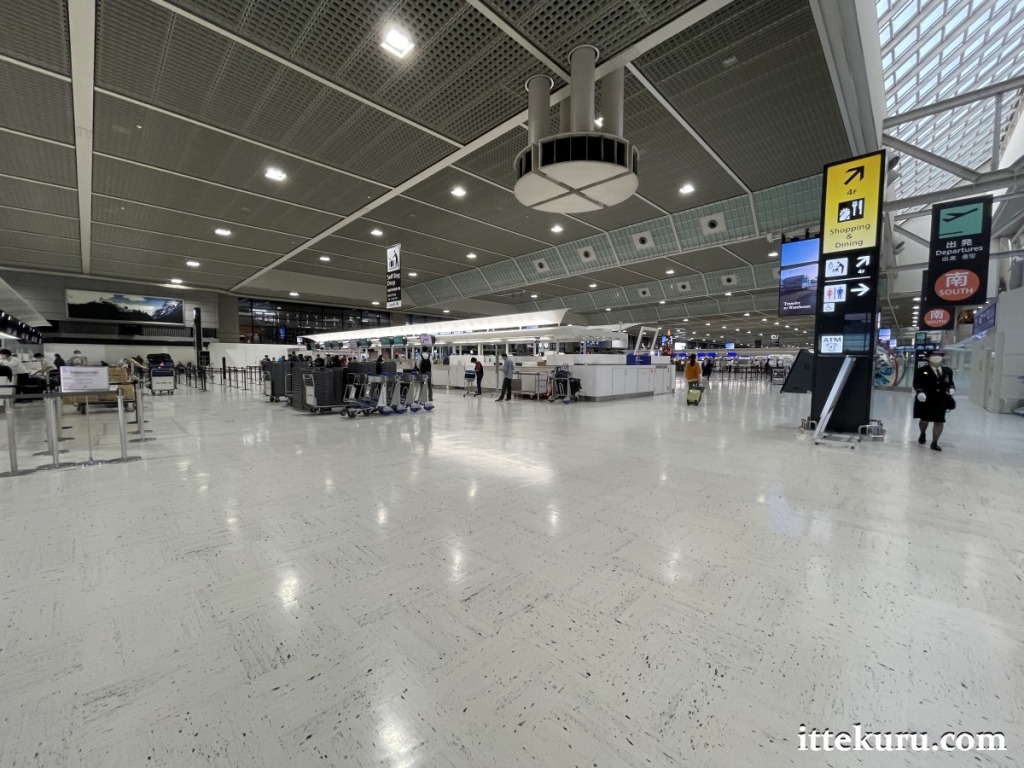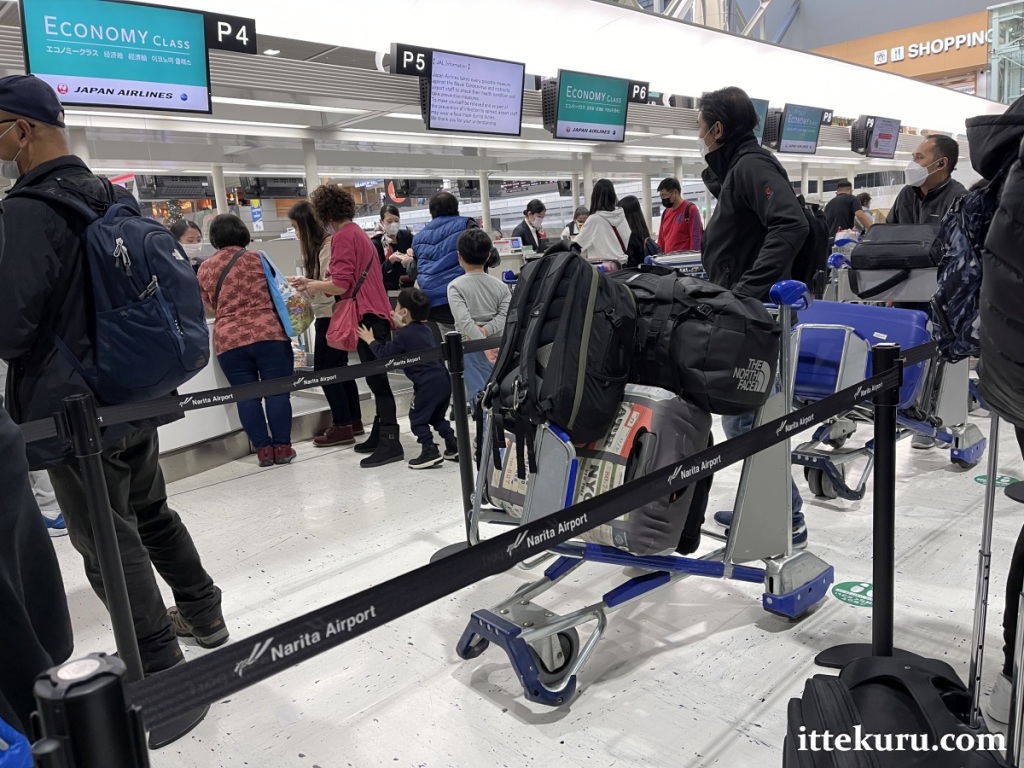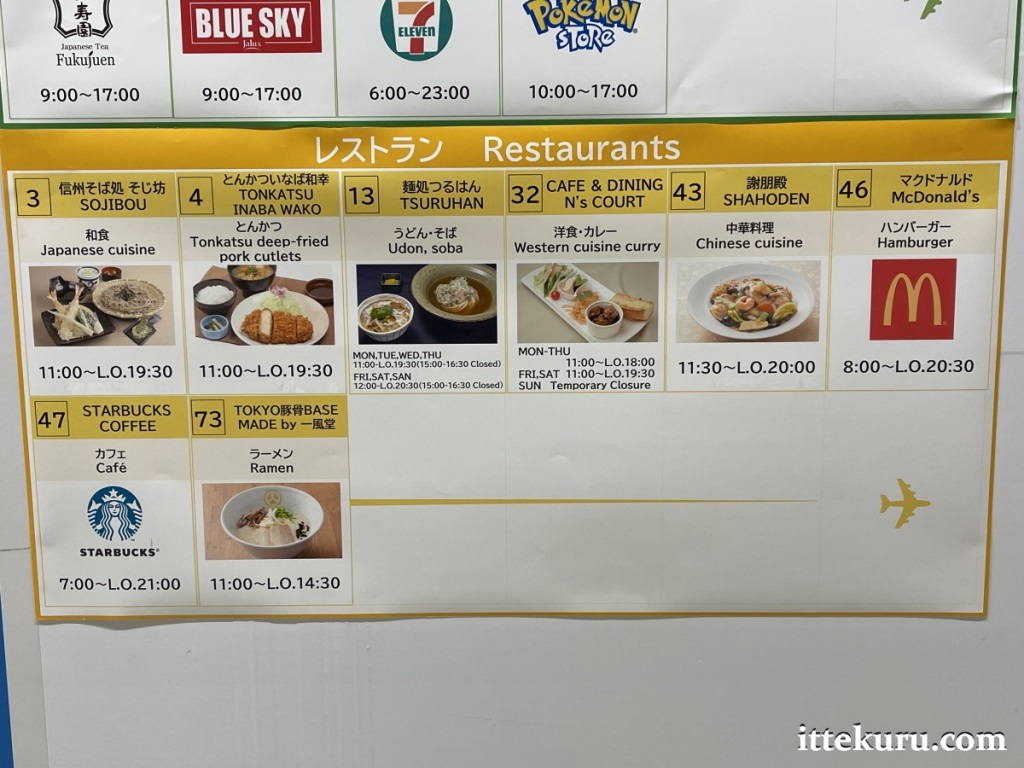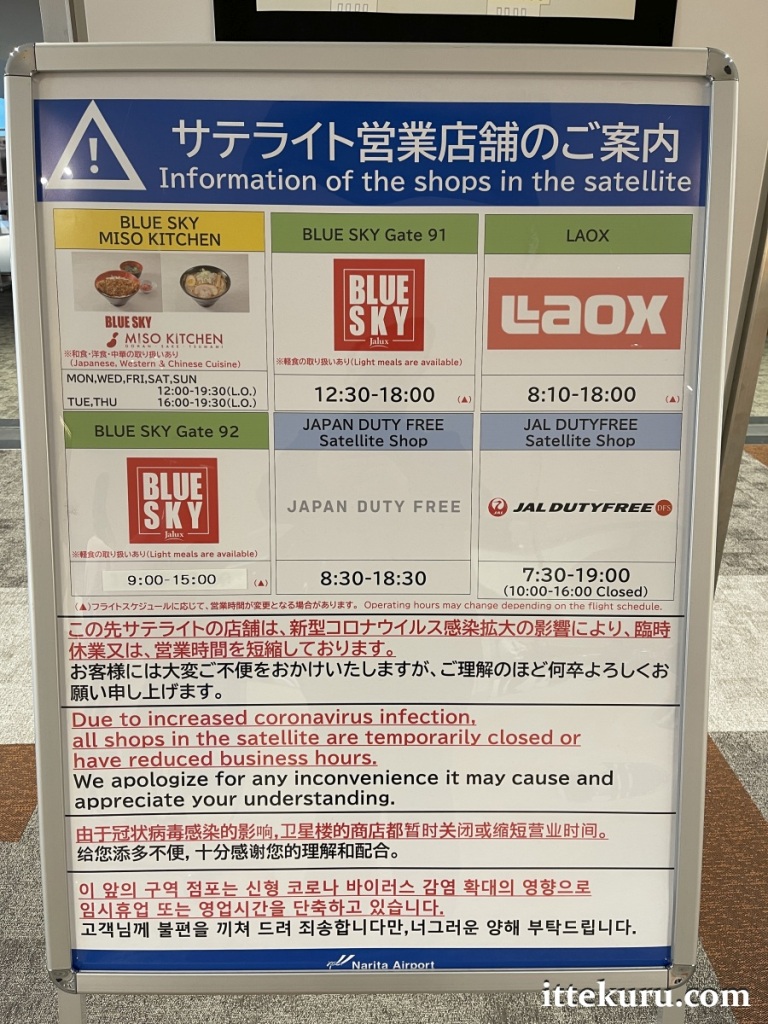I’ve used Terminal 2 (T2) at Narita International Airport (NRT) a number of times in the past, but my November and December 2022 flights into and out of this major transport hub were the first since the pandemic began more than two years ago. Let’s see how much things have changed since the last time I was here.
Note: For the sake of brevity, IATA codes and abbreviations will be used throughout this report (e.g., “NRT” for Narita International Airport, “T2” for Terminal 2).
The information and pictures presented here are drawn from my own experience of using NRT T2 on 08 November/07 December 2022. Entry/exit controls, check-in procedures, flight schedules and other details may change at any time without prior notice.
Lacking sufficient material (especially photographs) to craft a full terminal guide, I’ve limited myself to a personal account of what I saw and experienced at NRT T2 on my latest entry and exit through that facility. I should also add that due to the unpredictable changes still occurring in this new, post-coronapanic world, anything I’ve shared here will be out of date – at least in some respects – from the moment it’s published. For up-to-date information on what’s open and what’s needed, please refer to the official website.
OVERVIEW
Airport name (English) : Narita International Airport
Airport name (Japanese) : 成田国際空港 (Narita Kokusai Kūkō)
IATA code : NRT
ICAO code : RJAA
Location : Narita, Chiba Prefecture, Japan
Major city served : Tōkyō, Japan
Year opened : 1978
Terminals : Three
Related links : Official Site / Wikipedia / Japan-Guide
Date of visits documented in this report : Tuesday, 08 November 2022 (arr.) / Wednesday, 07 December 2022 (dep.)
The Greater Tōkyō area is served by two major airports: NRT outside the city proper, and Haneda Airport (HND) closer to the city centre. Although HND handles about twice as many passengers, the vast majority of them are domestic. Most international travellers arrive or depart via NRT instead.
The airport currently has three terminals. Two of these – including T2 which is the subject of this post – are conventional, fully equipped terminal buildings used mainly by legacy carriers (although some budget airline flights also arrive or depart from them). A separate facility designed and built for low-cost airlines, Terminal 3, opened in 2015; you can read more about it in this terminal report.
As mentioned earlier, I won’t go into too much detail about the airport and its facilities. The airport’s official website is the best place to start if you’re after information on travelling to/from NRT, operating hours, what restaurants and shops are available, where specific facilities are located and so forth. There’s also an excellent summary of transportation options on Japan-Guide. In addition, your airline’s website may have further details relevant to your specific flight.
LOCATION
ARRIVING AT NRT T2
Inbound flight: Manila, Philippines (MNL) to Tōkyō-Narita, Japan (NRT) on Japan Airlines flight JL 746
Tuesday, 08 November 2022
Given all the new and unfamiliar procedures in place to manage inbound passengers at NRT, my mind was decidedly focused on clearing all quarantine, immigration, and customs hurdles as quickly as possible. Translation: little or no time to stop for photographs.
To give you an idea of how things went, here’s a lightly edited version of an account I posted on a travel forum shortly after arriving in Japan. I need to emphasise that this reflects my experience at NRT T2 on 08 November 2022, and that the process as currently practised – or will be practised in the future – may be quite different from what I’ve recounted here.
PRE-DEPARTURE
I registered my personal details on the Japanese government’s MySOS app a few weeks before departure and uploaded a PDF copy of my vaccination certificate. Within a couple of hours, I received a blue screen indicating that my records had been examined and approved. Note: This was BEFORE 01 November 2022 when the quarantine functions of MySOS were integrated into the Visit Japan Web (VJW) portal. MySOS is no longer used. I completed a separate registration on VJW for immigration and customs, and instantly received QR codes for both.
EN ROUTE
Cabin crew distributed blank immigration and customs forms during the flight. I chose not to fill them out since I’d already pre-registered for both on VJW.
PRE-DISEMBARKATION
After we landed at NRT, the cabin crew announced that passengers should remain in their seats until the quarantine officers at the airport communicated their instructions about who should disembark first: (1) passengers entering Japan or (2) passengers transferring directly to other flights. (I suspect this varies depending on which checkpoint is more crowded, inbound or transfers.) Surprise surprise, everyone ignored this announcement and stood up immediately after the aeroplane docked.
Once the doors were opened, cabin crew announced that passengers entering Japan – myself included – should disembark first. Those transiting at NRT without entering Japan (easily identified via the large yellow-bordered “TRANSFER” tags on their hand luggage) were politely but firmly asked to resume their seats or stand aside. Needless to say, getting off the plane was easier said than done as the aisles were clogged with transfer passengers who had ignored the earlier announcement and were not immediately next to their original seats.
QUARANTINE CHECKPOINT
On the long walk from the gate, I immediately connected to the free airport WiFi and loaded up my QR codes. I showed my blue MySOS screen to one of the staff who handed me a blue card, which in turn allowed me to swiftly clear the checkpoints all the way to the final quarantine counter. After turning in the blue card, my QR code was scanned and I was handed a slip of paper with health precautions and other pandemic-related tips/instructions. Staff then waved me towards the immigration queue.
IMMIGRATION
Airport personnel checked to see whether passengers were in possession of either (1) a VJW immigration QR code or (2) a completed paper form. I showed my QR code and was allowed into the immigration queue. The process was essentially the same as before the pandemic – photo, fingerprints, sticker in my passport – except that I didn’t have to turn in a paper form (the officer simply took my phone and scanned the code).
CUSTOMS
After collecting my luggage, I queued up at a kiosk where I scanned (1) my passport’s information page and (2) my VJW customs QR code. The kiosk took my photograph – mask off for that bit! – and then I marched over to an e-gate. I removed my mask a second time, walked though the first set of gates which closed behind me, the camera recognised my face, the second set of gates swung apart…
…and voilà! At long last, I was back in Japan for the first time since the pandemic started.
All told, the process took approximately 20-30 minutes from aeroplane to exit. The main bottlenecks were a.) on the plane itself whilst we waited for an announcement on who was to disembark first (plus I was in Economy Class, not Business, so no priority disembarkation), b.) at baggage reclaim (again, Economy passenger so no priority tags), and c.) at the customs kiosks where quite a number of people were waiting in the queue to use them. Had I arrived at a less busy time and/or had I been travelling in Business Class with priority privileges, the whole thing might’ve been done with in 10-15 minutes.
DEPARTING FROM NRT T2
Outbound flight: Tōkyō-Narita, Japan (NRT) to Manila, Philippines (MNL) on Japan Airlines flight JL 745
Wednesday, 07 December 2022
My last pre-pandemic visit to Japan was in September/October 2019. I also used NRT T2 on that occasion and I can now report…
…that practically nothing has changed since that time. Superficially speaking, anyway.



It was only when I went up to the airport mall on 4F (overlooking the check-in counters) that I realised a lot has changed around here. As with all places heavily reliant on international travellers, T2 had been severely impacted by the border closures of 2020-22. The result: many tenants – retail and dining establishments alike – have had to cease operations or curtail their operating hours.
The following notice shows which places were still running in the airport mall as of 07 December 2022, when I turned up at T2 for my outbound flight. Note that this refers to the retail/dining floor in T2’s landside area (before immigration/security), and doesn’t cover anything in the secure airside zone.



Outbound security and immigration were pretty much as I remembered from pre-pandemic days. The big changes airside were of the same kind as landside: closed shops, limited dining options, restricted hours for those few places still running. I neglected to photograph the notice describing which places were operating in the main building, but at least one large duty-free shop was in service (along with a small number of luxury boutiques).
My flight’s assigned gate was in T2’s satellite concourse, a long walk from the main building.


Before the pandemic – as shown in my 2019 terminal report – this long walk was made more tolerable, and indeed interesting, by the thoughtfully designed seating area running alongside the passageway. Chairs, recliners, nap cubicles, even a high-tech toilet facility designed by TOTO….
…yeah, all gone. The entire midsection has been closed off with metal shutters, so passengers really have nothing to stop for hereabouts and are funnelled straight on towards the satellite. I do expect that this central area will be reopened once flight traffic returns to pre-pandemic levels – indeed it will be a necessity given the limited seating available by the gates – but for the moment, there’s nothing worth pausing for here.
The satellite itself was undergoing renovation work when I last visited in 2019, presumably in preparation for the 2020 Olympics and the anticipated avalanche of foreign visitors. (Well, we all know how that went.) The renovations were more or less complete at the time of my latest visit, which isn’t saying much as the overall design is far from noteworthy.



Unlike at the main building, I did remember to snap a picture of the notices stating what shops and restaurants were still open in the satellite concourse. Just to stress the point, these pictures were taken on 07 December 2022 and things may well have changed since that day (for the better or for the worse).


As for the boarding gates themselves…freshened up, clean, shiny, but not all that different from before. Except for the decidedly out-of-place plastic sheet hanging over the service counter, which makes for nice coronapanic theatre but probably offers little or no actual protection.




One other thing I should mention, which applies both to the arrival and departure experience: masks remain de rigueur. Interestingly, to my knowledge masks have never been made legally obligatory in Japan at any point during the pandemic, but it speaks volumes about social cohesion in this corner of the world that the vast majority complied with what effectively amounted to a mere recommendation. That recommendation has shifted further of late, with masks no longer prescribed in outdoor settings provided that distancing can be maintained, yet even then – on my one-month journey across large swathes of the country – you will find a near-total adherence to mask wearing both indoors and outdoors.
And there we are. On the one hand, the world continues to grapple with a virus about which much remains unknown, and limited abnormal measures may yet remain necessary (or at least socially desirable amongst some sectors) for a good while to come. On the other hand, the “coronapanic” phase where irrational fear of the new disease led to the imposition of draconian, excessive, and in certain cases potentially illegal restrictions has mostly dissipated. NRT T2 broadly reflects that present reality: one of open borders and massively reduced strictures coupled with lingering effects on livelihoods and tenacious practices of dubious efficacy that remain chiefly out of habit and social pressure.
In any event, I for one am really quite glad that the border gates have swung back open, and I fully intend to resume my old habit of visiting Japan twice or so every year. We shall see in due course how things will continue to change on the ground at NRT (and at other airports I might use in the future), and we shall observe how our relationship with a disease that mankind must learn to live with – given the impossibility of its eradication – will develop as time passes.
Cheerio.
Pingback: Flight Report: MNL-NRT on Japan Airlines Flight JL 746 (08 November 2022) | Within striking distance·
Pingback: Flight Report: NRT-MNL on Japan Airlines Flight JL 745 (07 December 2022) | Within striking distance·
How long did it take for you to clear immigration?
Not long at all, but it’s highly dependent on queue length (which in turn depends on how many flights arrive at the airport at the same time). The process itself was quick and easy, and little different from before the pandemic: passport check, fingerprints, picture, and off through the gate. Cheers.
Pingback: Flight Report: NRT-MNL on Japan Airlines Flight JL 745 (09 October 2023) | Within striking distance·